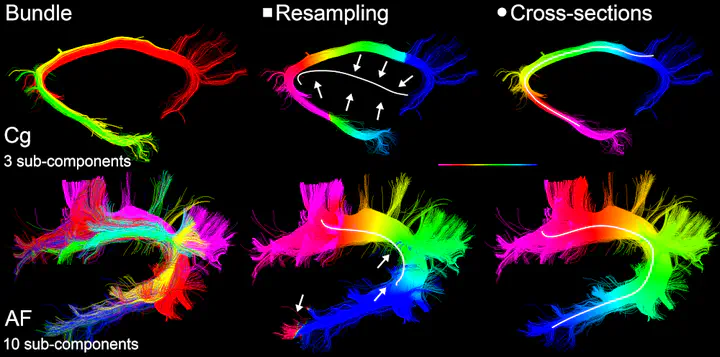Obtaining representative core streamlines for white matter tractometry of the human brain

Abstract
Diffusion MRI infers information about the micro-structural architecture of the brain by probing the diffusion of water molecules. The process of virtually reconstructing brain pathways based on these measurements is called tractography. Various metrics can be mapped onto pathways to study their micro-structural proper- ties. Tractometry is an along-tract profiling technique that often requires the extrac- tion of a representative streamline for a given bundle. This is traditionally computed by local averaging of the spatial coordinates of the vertices, and constructing a sin- gle streamline through those averages. However, the resulting streamline can end up being highly non-representative of the shape of the individual streamlines form- ing the bundle. In particular, this occurs when there is variation in the topology of streamlines within a bundle (e.g., differences in length, shape or branching). We propose an envelope-based method to compute a representative streamline that is robust to these individual differences. We demonstrate that this method produces a more representative core streamline, which in turn should lead to more reliable and interpretable tractometry analyses.
Reference:
Maxime Chamberland, Samuel St-Jean, Chantal M. W. Tax, and Derek K. Jones Obtaining representative core streamlines for white matter tractometry of the human brain. Computational Diffusion MRI, Springer International Publishing, pp.3–19.